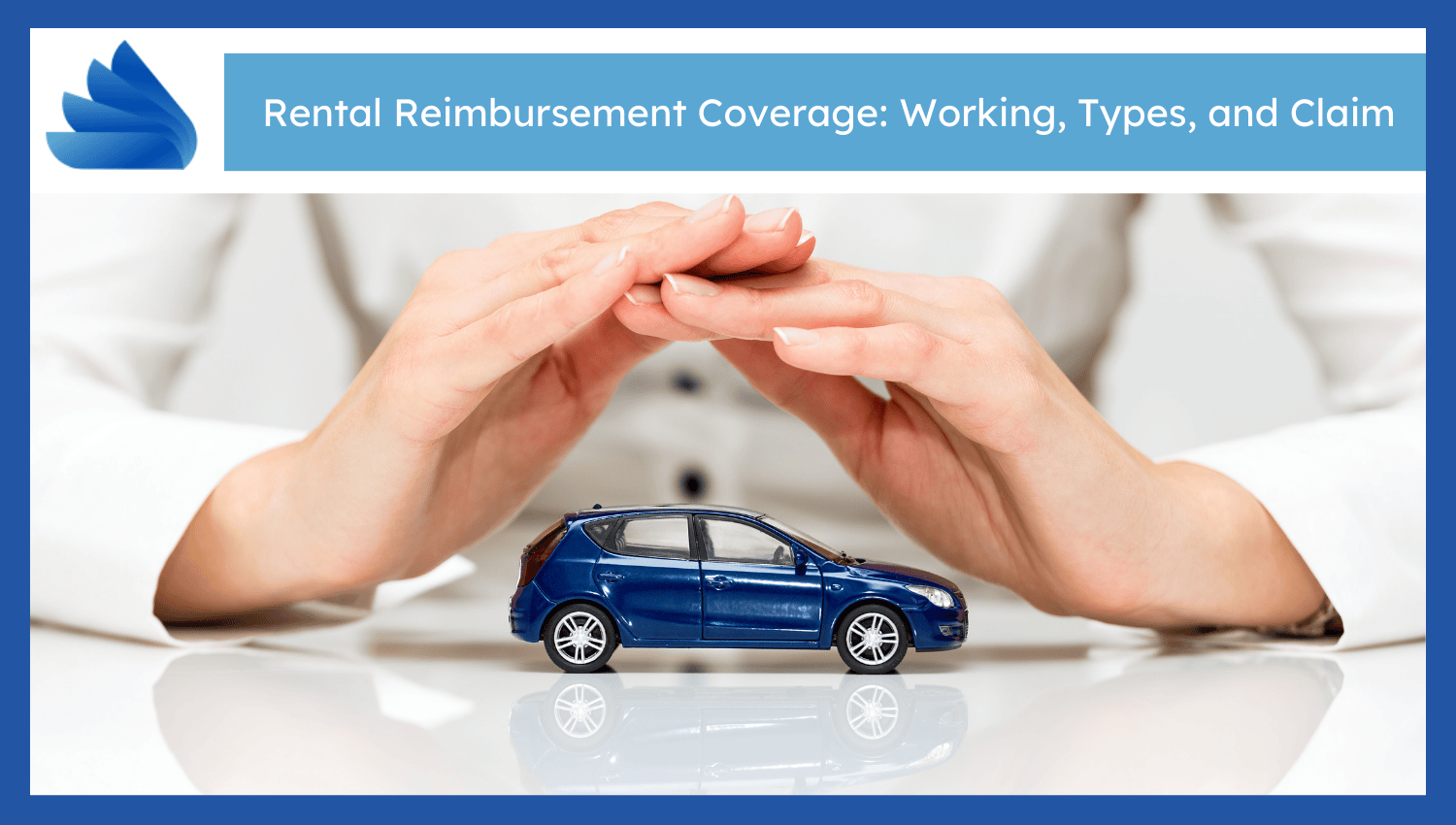
Rental Reimbursement Coverage: Working, Types, and Claim
Rental reimbursement coverage is optional motor insurance that covers the cost of a temporary vehicle when your insured car is being repaired following a covered accident. It safeguards drivers against personal expenses in temporary transport.
The Insurance Information Institute notes that 60 percent of drivers with collision claims utilize the rental reimbursement coverage in order to avert the expense of rental fees. The coverage is commonly an accompaniment of the collision and comprehensive insurance and has daily limits such as a $30 daily cover and a $900 maximum per claim.
Transportation expense coverage, or rental car coverage, is provided to keep up the mobility during the repair time. It covers only incidents causing the damage, and does not cover ordinary maintenance or breakdown of service. The coverage enhances convenience and financial security when repairing the vehicle.
How Does Rental Reimbursement Coverage Work?
Here is the six working of Rental Reimbursement Coverage:- After an Accident: The insurer provides a rental car when your own car is receiving covered repairs. This ensures that you do not pay out of pocket to transport yourself during the repair period.
- Covered vs. Non-Covered Incidents: Rental reimbursement is available in case the covered loss causes damage. It does not cover repairs to maintain or fix mechanical breakdowns.
- Daily and Total Limits: Policies establish a daily rental restriction of typically $20 to $40. The maximum coverage limits are normally between 600 to 900 dollars, which animates the amount that the insurance firm covers per claim.
- Liaison with Repair Shop: Insurers also deal directly with repair shops or rental agencies. This enables the insured drivers to hire rental cars on short notice without an upfront payment.
- Coverage Duration: Rental Reimbursement remains in effect until your car is repaired or your maximum coverage limit is reached. It lasts based on policy limits and repair time.
- State-Specific Variations: Certain states have either mandated insurers to provide rental reimbursements or establish particular rules of coverage. These regulations differ and influence the application of rental cover in various states.
What Does Rental Reimbursement Coverage Include?
Here are the three expenses Rental Reimbursement Coverage include:- Rental Car Expenses: Rental part reimbursement insurance covers the cost of rental cars when the cost of the insured car undergoes repair due to a covered accident or loss. The coverage prevents out-of-pocket rent costs throughout repair time.
- Alternative Transportation: Some insurance coverage even reimburses alternative means of travel such as rideshares or public transportation, in case there are no rental cars or they are not desired. This protection is subject to certain policy conditions and allows mobility during the repair period.
- Direct Billing group Rental Company: Some insurers deal directly with the rental companies so they can pay actual rental bills. This arrangement avoids the need to pay down payment by insured drivers to facilitate the rental process and minimize upfront costs.
What are the Types of Rental Reimbursement Coverage?
Here are the two types of Rental Reimbursement Coverage:- Daily Limit Coverage: The limit daily coverage is a fixed amount of money that can be paid per day of the rental car costs. Daily limits usually vary between 20-40 dollars, and they govern the cost of your rental on a daily basis, when your car is in the process of covered repair.
- Total Limit Coverage: Total limit coverage provides the limited number of rental expenses which are covered at each claim. This amount typically falls between $600 to $900 and there is a limit on the overall reimbursement regardless of how many days of hire are used.
How to File a Rental Reimbursement Claim?
Here are the four ways ways of claiming Rental Reimbursement Coverage:- Immediate Notification: Notify your insurer as soon as possible after the accident. Early reporting gets the claim process initiated early and also makes you meet policy requirements on rental reimbursement insurance.
- Accident & Repair Record: Police reports, damage pictures, and repair shop estimates. These papers confirm the accident and repairs necessity, and they help with your rental reimbursement claim.
- Evidence of Rental: Place the rental agreements and receipts with the insurer. These documents substantiate rent costs and justify your request of reimbursement.
- Insurer Coordination: Collaborate with accepted rental providers as long as your insurer asks you to do that. This collaboration can make the claim process easier and even it might offer direct payment options.
Who Should Consider Rental Reimbursement Coverage?
Here are the three groups consider Rental Reimbursement Coverage:- Daily Commuting Drivers: Rental reimbursement coverage is useful to drivers who commute regularly. It pays the transportation bills until their personal car is repaired, thus there is no disturbance in the work or in habitual activities due to absence of any individual vehicle.
- Individuals lacking a Back-up Car: People who do not have a second car depend on the rental reimbursement coverage. This coverage provides constant movement during days of repair, and it eliminates the need to use others to reach transportation.
- Restricted Public Transportation: Rental reimbursement is beneficial to individuals in regions with low public transportation facilities. It offers them another mode of transportation in times where their car is out of service on repair.

